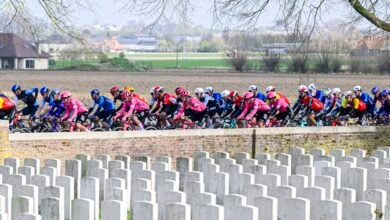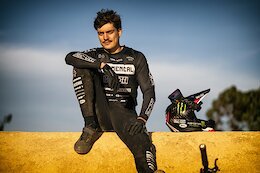Power Analysis: Pogačar’s Fastest Ever Tour of Flanders Masterclass

“], “filter”: { “nextExceptions”: “img, blockquote, div”, “nextContainsExceptions”: “img, blockquote, a.btn, a.o-button”} }”>
After Mathieu van der Poel held his wheel at Milan-San Remo, few had Tadej Pogačar as the out-and-out favorite for the Tour of Flanders. The world champion won the Ronde van Vlaanderen in 2023, but was unable to drop Van der Poel in this season’s first monument.
The Tour of Flanders would be much harder than Milan-San Remo – much much harder – but it is also the peak of the Belgian classics season. It is a season built for big men. While the lightweight climbers target the Giro d’Italia or build their form ahead of the Tour de France, cycling’s big men go north for Holy Week.
Outside of Pogačar, the average weight of the Top 10 finishers at this year’s Ronde is somewhere around 78-80 kilograms. That includes riders like Mads Pedersen, Van der Poel, Wout Van Aert, Stefan Küng, and Filippo Ganna. Pogačar is an outlier, but we already knew that. When was the last time a rider won the Tour of Flanders, Giro d’Italia, Tour de France, Liège–Bastogne–Liège, world championships, and Il Lombardia within a 12-month period? I don’t believe it had ever been done before.
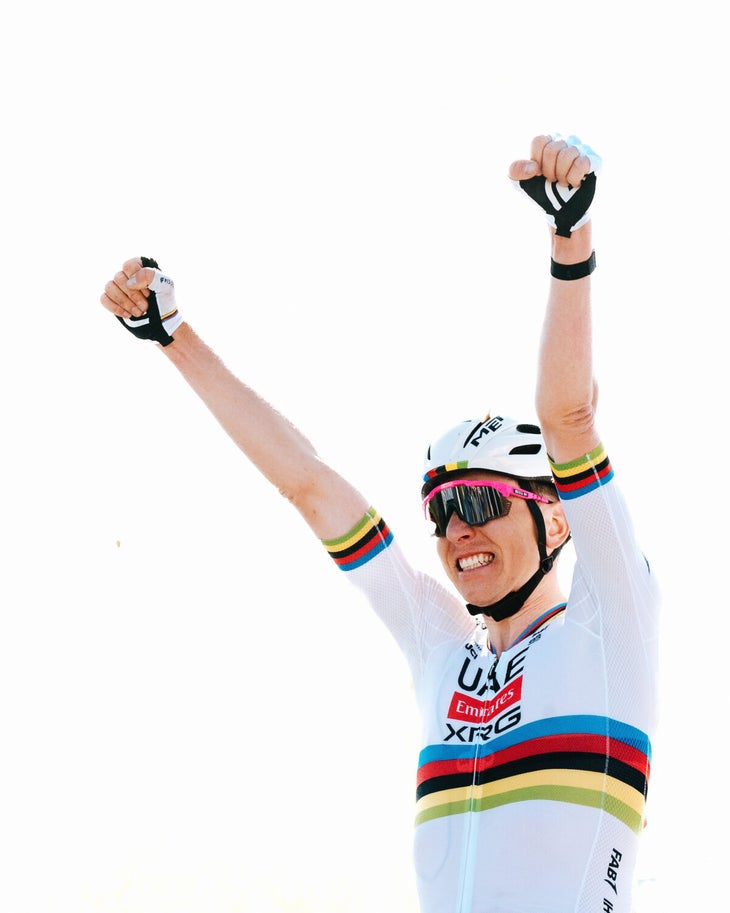
UAE Team Emirates-XRG’s Pre-Race Plan
The morning of the Ronde, many experts believed that Pogačar would launch a thermonuclear attack on the second passage of the Oude Kwaremont with 56 km to go. UAE Team Emirates-XRG would lead it out into the base of the climb, and then Pogačar would attack full gas.
But with 120 km to go, that plan was slowly falling apart. Jhonatan Narváez, Tim Wellens, and Florian Vermeersch had all gone down in crashes, and some of them would never return to the front of the race. Narváez had been Pogačar’s final lead out man on the Cipressa in Milan-San Remo, but now the world champion would be left on his own. Mikkel Bjerg and Antonio Morgado did everything they could to help Pogačar, but the pair could only do so much against a peloton of 100+ riders.
Pogačar wasn’t the only one without problems in the first part of the race as Van der Poel crashed hard without about 120 km to go. On the descent into the Eikenberg, the Dutchman went down with a whole host of riders. But thankfully, Van der Poel only fell into the grass, so he was back on his bike in under a minute. That chase surely cost Van der Poel at the end of the race, and who knows what would have happened in the finale if Van der Poel hadn’t crashed.
MVDP eventually made it back to the front of the peloton, but shortly thereafter, an attack featuring Tiesj Benoot, Filippo Ganna, Küng, and Quinten Hermans went up the road. Suddenly, Visma Lease-a-Bike and Alpecin-Deceuninck had riders up the road, putting more pressure on Pogačar and his teammates.
The group containing Benoot and Ganna had more than a minute’s lead coming into the second Oude Kwaremont, and that’s when the race truly began. Vermeersch attempted to lead out Pogačar, but the world champion wasn’t on his wheel. Pogačar attacked anyway, taking Van der Poel by surprise, and pulling a group clear that included Van Aert, Pedersen, and Matteo Jorgenson. Each rider was suffering like mad in Pogačar’s wheel, but they all managed to stay in contact over the top of the climb.
This was the fastest Oude Kwaremont ever recorded, with Pogačar taking the Strava KOM in a time of two minutes and 49 seconds.

Pogačar – Attack on the Second Oude Kwaremont
- Time: 2:49
- Estimated Average Power: ~540w (8.3w/kg)
MVDP in 2022: 3:03 at 556w
After a quick descent, MVDP took the lead on the Paterberg, attacking Pogačar and splitting the group of favorites. Benoot and Ganna were caught on the next few climbs, and only a few riders from the lead group could hang onto MVDP and Pogačar. The Paterberg attack was one of MVDP’s strongest throughout the race, but it didn’t really go anywhere as the favorites group came back together over the next few kilometers. Jasper Stuyven had rejoined with Pedersen, while Van Aert and Jorgenson worked together to chase down the leaders.
Isolated with over 40 km to go, Pogačar continued attacking in an attempt to split the group. His attack on the Koppenberg was enough to take the Strava KOM with a ridiculous time of one minute and 38 seconds.

Pogačar – KOM on the Koppenberg
- Time: 1:38
- Estimated Average Power: ~600w (9.2w/kg)
MVDP in 2022: 1:50 at 615w
Coming into the final Oude Kwaremont, Pogačar was still being marked by MVDP, Pedersen, Van Aert, and Jorgenson. So far, Pogačar hadn’t been able to get away solo. Some of his attacks had gapped Van der Poel, while other efforts had destroyed Van Aert and Jorgenson. But none of his attacks had been strong enough to gap everyone.
Pogačar’s secret isn’t explosivity. We’ve seen time and time again that top riders can match one or two of Pogačar’s biggest attacks. Tom Pidcock followed Pogačar’s race-splitting move in Strade Bianche. Van der Poel and Ganna followed Pogačar’s record time on the Cipressa. And four riders were able to follow Pogačar on his record ascent of the Kwaremont.
But none of those attacks came on the final climb of the race. Pogačar wears his competitors down from start to finish. Each attack is another bullet spent by his rivals, and some of them only have one left in the chamber. In the finale of this year’s Tour of Flanders, Pogačar attacked on nearly every climb in the final 60 km. But his effort on the final Kwaremont was the one that broke them all.
Despite being 20 seconds slower than the previous repetition, Pogačar’s attack on the final Oude Kwaremont gapped everyone off his wheel.
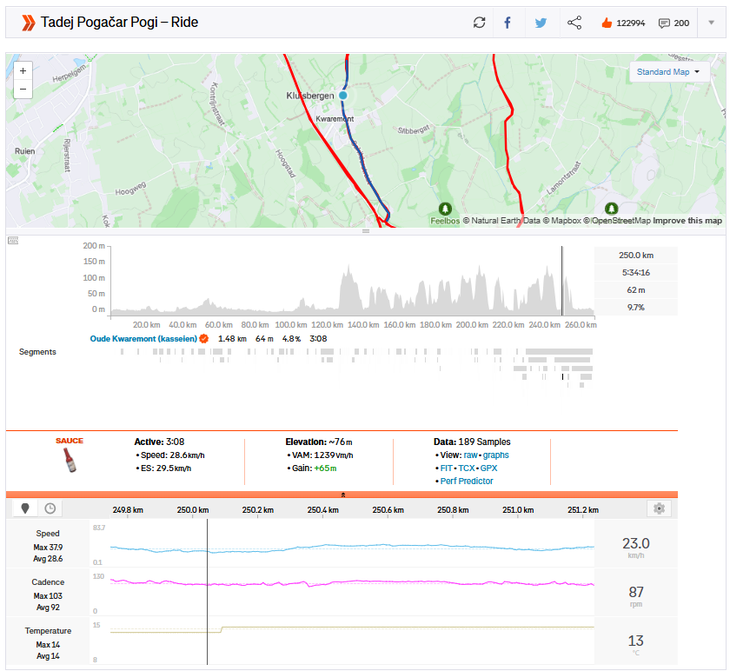
Pogačar – Winning Attack on the Final Kwaremont
- Time: 3:08
- Estimated Average Power: ~515w (7.9w/kg)
Van der Poel held onto Pogačar’s wheel the longest, but it was Van Aert who came through and looked the strongest on the climb out of the chase group. WVA, Pedersen, Stuyven, and MVDP came over the top of the Kwaremont 12 seconds behind Pogačar. It was a closable gap, but their legs were beginning to fade.
Van der Poel could barely pull in the finale, while the remaining trio worked as much as they could. Pogačar’s gap kept growing, and with 5 km to go, the race was over. The world champion finished a minute clear of the chase group, with Pedersen winning the sprint for second ahead of Van der Poel and Van Aert.
What cannot be forgotten is Pogačar’s final effort to the finish. After nearly six hours of racing, the world champion increased his gap to four of the strongest riders in the world. Pogačar was riding into a block headwind, yet, he still managed to average 46 kph for the final 11 km.
In the end, it was a dominant win by who many are saying is the greatest cyclist of all-time. Pogačar is certainly etching his name into the history books, and we won’t have to wait long until he takes on another monumental challenge in his first-ever Paris-Roubaix.
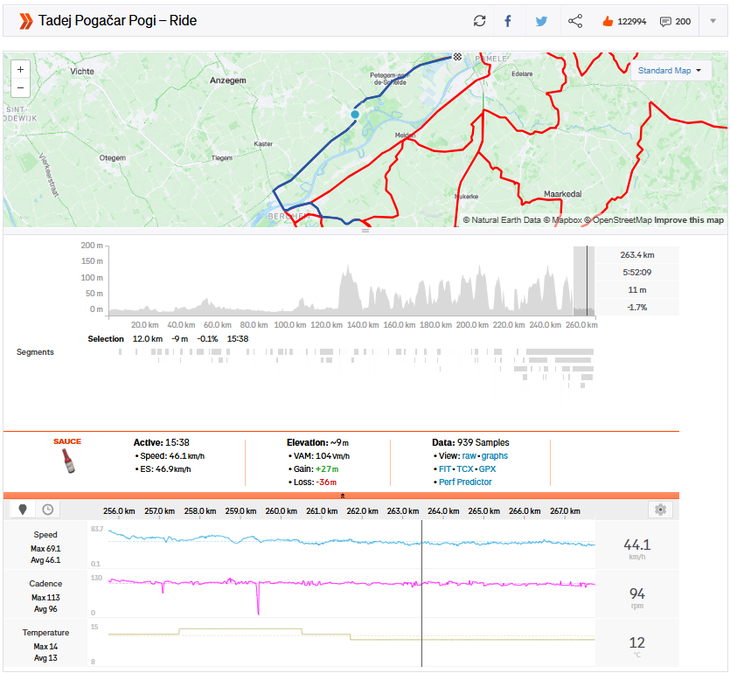
Pogačar – Solo to the Finish
- Time: 15:38
- Average Speed: 46.1 kph into a block headwind
Power Analysis data courtesy of Strava
Strava sauce extension
Riders:



